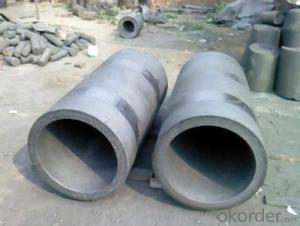When it comes to powering our modern world, lithium-ion batteries have become the go-to choice for a myriad of applications, from smartphones to electric vehicles. But what makes these batteries tick? The answer lies in their unique combination of lithium-ion technology and graphite electrodes. Let’s dive into the fascinating world of these power-packed components and explore how they work together to keep our devices running smoothly.
Lithium-ion batteries, often abbreviated as Li-ion, have been around since the 1970s, but it wasns. They were first commercialized in the 1990s, and since then, they’ve revolutionized the way we think about portable power. These batteries are known for their high energy density, which means they can store a lot of energy in a relatively small space. This is a crucial factor for devices that need to be compact and lightweight, like smartphones and laptops.
Now, let’s talk about the heart of the lithium-ion battery: the graphite electrodes. Graphite, a form of carbon, is chosen for its ability to hold a lot of lithium ions. During the charging process, lithium ions move from the cathode to the anode, which is made of graphite. When the battery is discharged, or in use, these lithium ions move back to the cathode. This back-and-forth movement of lithium ions is what generates the electric current that powers our devices.
One of the reasons lithium-ion batteries are so popular is their impressive cycle life. They can be charged and discharged hundreds, sometimes even thousands, of times before their performance starts to degrade. This is great news for consumers, as it means their devices can be used for longer periods without needing to replace the battery.
But lithium-ion batteries aren’t without their challenges. They can be sensitive to high temperatures, which can cause them to degrade faster or even pose safety risks. That’s why engineers and scientists are constantly working on improving the safety features of these batteries, such as implementing temperature control systems and developing new materials that can withstand higher temperatures.
Another area of focus is the development of new types of graphite electrodes. Researchers are exploring the use of different materials, such as silicon, to enhance the capacity and performance of lithium-ion batteries. Silicon has the potential to hold even more lithium ions than graphite, which could lead to batteries with longer-lasting power. However, silicon has its own set of challenges, such as膨胀 when it absorbs lithium ions, which can cause the electrode to break apart over time.
Despite these challenges, the future of lithium-ion batteries looks bright. As technology advances, we can expect to see even more efficient and powerful batteries that will continue to push the boundaries of what’s possible in the world of portable power. Whether it’s for our smartphones, laptops, or electric vehicles, lithium-ion batteries and their graphite electrodes are here to stay, and we can’t wait to see what innovations lie ahead.
In conclusion, lithium-ion batteries and graphite electrodes are a dynamic duo that has transformed the way we power our devices. Their high energy density, impressive cycle life, and ongoing innovations make them an essential part of our daily lives. So next time you plug in your phone or hop into an electric car, take a moment to appreciate the marvel of technology that’s working behind the scenes to keep you connected and on the go.

